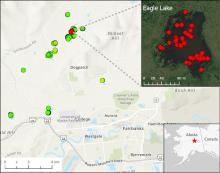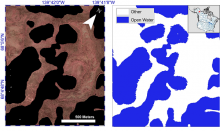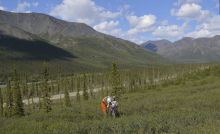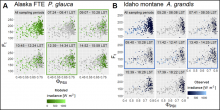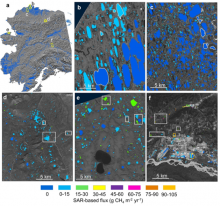Methane Ebullition Hotspot Locations in Frozen Lakes near Fairbanks, Alaska
Location of 15 lakes surveyed for methane ebullition hotspots (green points) north of Fairbanks, AK, on October 8, 2014. Inset shows detail of Eagle Lake with locations of 43 hotspots (red points) detected by openings in lake ice.

